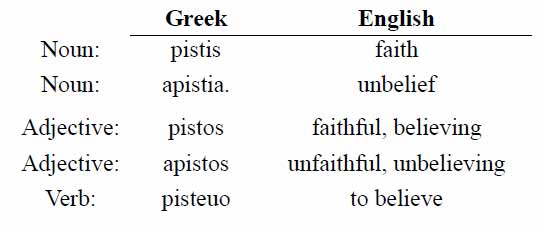 I sat down with Eric Nevins today to discuss Mark 1:40-45, a passage where Jesus interacts with a leper. If you have ever felt like an outcast, or that people reject and despise you, you will really enjoy this discussion of the interaction between Jesus and the leper in Mark 1:40-45.
I sat down with Eric Nevins today to discuss Mark 1:40-45, a passage where Jesus interacts with a leper. If you have ever felt like an outcast, or that people reject and despise you, you will really enjoy this discussion of the interaction between Jesus and the leper in Mark 1:40-45.
If you have a podcast and want to “trade” interviews, you can contact me here and join Eric’s Christian Podcast Association here.
Resources Mentioned in this Podcast Discussion of Mark 1:40-45
- The Website of Eric Nevins
- Halfway There: The Podcast of Eric Nevins
- The 8-Day Experience in Mark 1:40-45
- The Christian Podcast Association Facebook Group
- Eric Nevins interviews Jeremy Myers (2018): Jeremy Myers and How God’s Faithfulness Shattered His Religion
- Eric Nevins interviews Jeremy Myers (2019): Jeremy Myers and the Experience of Faith
- My study of the parallel account in Luke 5:12-16
You can also watch the video below:






 God desires both relationship and fellowship with and between His children.
God desires both relationship and fellowship with and between His children. One cannot walk in the darkness and also be a friend with God.
One cannot walk in the darkness and also be a friend with God.



 In fact, demons probably know more about God than we do. Demons probably have better theology than many Christians. That is, demons probably believe more accurate truths about God than many Christians do.
In fact, demons probably know more about God than we do. Demons probably have better theology than many Christians. That is, demons probably believe more accurate truths about God than many Christians do. And he uses a particular event in the life of Abraham to prove that Abraham’s faith led him to obey God and perform certain actions, which in turn, allowed people to recognize that Abraham was truly God’s friend.
And he uses a particular event in the life of Abraham to prove that Abraham’s faith led him to obey God and perform certain actions, which in turn, allowed people to recognize that Abraham was truly God’s friend.


 This is even true when the Bible refers to the faith of God or the faith of Jesus.
This is even true when the Bible refers to the faith of God or the faith of Jesus.

 The Bob Dutko Show (noon – 4pm, Mon-Fri) is Detroit’s number one talk Christian radio show. He is heard on radio stations across the country, making him one of the most listened to Christian talk show hosts in the United States.
The Bob Dutko Show (noon – 4pm, Mon-Fri) is Detroit’s number one talk Christian radio show. He is heard on radio stations across the country, making him one of the most listened to Christian talk show hosts in the United States. 